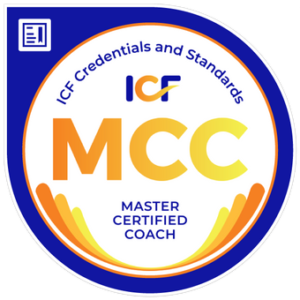
What modern business philosophy can streamline an organization’s hiring, performance, and management structures–all while improving employee performance, productivity, and positivity, as well as the organization’s overall profitability?
If you guessed the strengths revolution, fathered by Dr. Donald O. Clifton and made famous by Gallup, you hit the target (and “Input” could be one of your signature strengths—more on that later). The birth of positive workplace psychology in the late 90s paved the way for the strengths movement to explode at the beginning of the 21st century and this synergy of strengths and psychology changed corporate culture forever. Since Gallup’s publication of Now, Discover Your Strengths featuring the Clifton Strengths Finder in 2001, companies across the United States—and the world—have been cultivating strengths based cultures, all with incredible results.
For the last decade, the implementation of strengths based selection profiles, performance systems, and management structures have generated marked increases in hundreds of companies’ employee engagement and, consequently, customer satisfaction and sales revenue.
World leaders in mortgage banking, hotels, automobile manufacturing, and healthcare, among others, have contracted Gallup to design strengths based systems to help them meet and exceed their organizational goals and Gallup never fails—time and time again, strengths based systems yield record growth for teams and organizations of all sizes, all while changing individual employees’ lives.
With the help of Dr. Donald O Clifton, Gallup compiled nearly a half century of strengths research into Now, Discover Your Strengths, which featured a list of 34 talents and an assessment to help people identify their 5 signature strengths. (“Input,” the strength I mentioned before, is one of Gallup’s 34 talents, and is characterized by a desire to acquire knowledge and know more. Those with the Input strength are veritable storehouses of information.) The Strengths Finder assessment, now updated in the Strengths Finder 2.0, debuted in 2001 in Now, Discover Your Strengths.
The idea behind the strengths movement is that the traditional development approach, being deficiency-focused, is flawed. Clifton and Gallup concluded that, when one focuses on a weakness instead of a strength, he or she may improve, but only to an average performance level. Strengths based development, on the other hand, focuses on harnessing and maximizing an individual’s strengths in order to give each member of an organization the opportunity to shine. When a company’s employees are actively engaged in their work and intrinsically motivated by each task, Clifton argues, this is reflected in the organization’s productivity and profitability.
Strengths based leadership schemes are predicated on the notion that it is a well-rounded team, not well-rounded employees, that breeds success.
Because strengths based development requires a complete shift in how an organization operates and how its employees interact, it can take years for a traditional company to make the strengths transition. For companies ready to switch, Executive Strengths Expert, Brent O’Bannon, founder of www.StrengthsFinderCoaching.com and www.ExecutiveStrengths.com prescribes a 5 step process:
1. Start the assessment/coaching process with your company’s executive leaders.
2. Build a well-rounded executive/management team focused on communicating, understanding,and leveraging each others strengths.
3. Design a plan to assess every employee’s strengths and apply these strengths to improve job performance.
4. Shift to a strengths based business style and company culture starting with selection process and identify the specific strengths your company needs, based on its business plan/mission.
5. Continue applying the strengths based company model to communication, leadership, sales, customer service and employee well-being. Regularly measure, review and refine the strengths process.
Gallup’s approach to designing strength based solutions for the companies it consults with closely mirrors O’Bannon’s. When working with “one of the largest banks in North America,” as well as a “luxury hotel management firm operating 41 properties in six countries,” (the only details it will reveal in order to protect client confidentiality) Gallup focused in on each company’s approach to selection instead of taking an ax to everything at once.
In both cases, Gallup worked closely with each company before crafting strengths based selection profiles that spoke to the business’ specific needs and goals. Based on these profiles, the bank and the management firm modified their interview style, writing new questions to help pick up on each candidate’s company-compatible strengths (or lack there of). The result, for the bank as well as the hotel management firm, was an increase in productivity for all employees and 85-90% success rates for employees hired using the specially-designed interview techniques.
According to Gallup research, less than ¼ of all Americans are “actively engaged” in their work. In other words, over 75% of workers in the United States hate their jobs, with productivity levels that match their attitudes. But just as employee engagement is taking a nosedive, mega-companies like Starbucks, Aviva, Ernst & Young, and Unilever, as well as your every day Mom ‘n’ Pop corner store are switching to the strengths model because they have seen how empowering employees leads to skyrocketing sales.
Studies show that when employees are given an opportunity to utilize their strengths on a daily basis, they will be more “actively engaged” and team productivity will soar. On the other hand, disengaged employees have the potential to destroy profits—permanently. (A disengaged, or, negative team member is the ultimate liability when it comes to customer service.)





